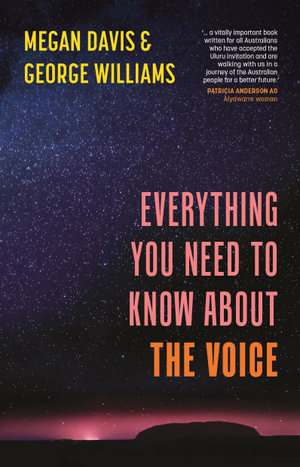Everything you need to know about The Voice by Megan Davis and George Williams

Just as the title says, this 200 page book has everything you need to know, from the history of Aboriginal campaigns for recognition, to the imminent referendum about the proposed Voice to Parliament.
A timeline at the front of the book reveals that Indigenous people have argued for political representation and fairer consultation for more than a century. It was in 1846 that exiled Tasmanian Aboriginal people petitioned Queen Victoria, and in 1886 that William Barak wrote that “we should be free like the White Population”. In 1933 Yorta Yorta man William Cooper petitioned King George VI for representation in federal Parliament. David Unaipon, whose face appears on the $50 note, repeatedly called for Aboriginal autonomy. The list of people and their petitions, the organisations and their reports, continues until the present day.
The authors describe the regional dialogues that led to the 2017 National Convention at Uluru that gathered Indigenous representatives from across Australia. It was the “most proportionately significant consultation process that has ever been undertaken with First Peoples”. From that came The Uluru Statement from the Heart, calling for a Voice to Parliament. The statement is included in full as an Appendix to the book.
The Voice proposes to allow Aboriginal people to make representations about matters relating to them. Australia endorsed the United Nations Declaration on the Rights of Indigenous People in 2009, emphasizing the importance of Indigenous participation in political decisions about their rights. The Voice is a means to implement that. Examples of countries with similar structures or processes include Norway, Sweden, Finland, New Zealand and Colombia.
The chapter on The Voice includes a section on myths and misconceptions. As the authors point out, “there is nothing in Australian law that punishes people for telling lies about a proposed change to the Constitution”, so for readers who just want to get to the crux of arguments in the media, this is a really useful section that plainly puts the facts.
This excellent little book is a chance to become informed about the Constitution, how referendums work, the long history of Aboriginal campaigns for rights, and how the Voice presents the opportunity to allow Aboriginal and Torres Strait Islander people to not just be counted, but to be heard. It is a book to be read, then shared with others.
Themes: Aboriginal and Torres Strait Islander peoples, Indigenous rights, Australian Constitution, Referendum, The Voice.
Helen Eddy